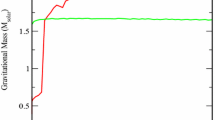
Access this book
Tax calculation will be finalised at checkout
Other ways to access
About this book
Similar content being viewed by others
Keywords
Table of contents (29 chapters)
-
Front Matter
-
Inside Neutron Stars
-
Front Matter
-
-
Formation and Evolution
-
Front Matter
-
-
Observations on Binaries and QPO’s
-
Front Matter
-
Editors and Affiliations
Bibliographic Information
Book Title: Neutron Stars: Theory and Observation
Editors: Joseph Ventura, David Pines
Series Title: Nato Science Series C:
DOI: https://doi.org/10.1007/978-94-011-3536-8
Publisher: Springer Dordrecht
-
eBook Packages: Springer Book Archive
Copyright Information: Kluwer Academic Publishers 1991
Hardcover ISBN: 978-0-7923-1397-7Published: 30 September 1991
Softcover ISBN: 978-94-010-5565-9Published: 25 September 2012
eBook ISBN: 978-94-011-3536-8Published: 06 December 2012
Series ISSN: 1389-2185
Edition Number: 1
Number of Pages: XI, 592
Topics: Astrophysics and Astroparticles, Condensed Matter Physics



